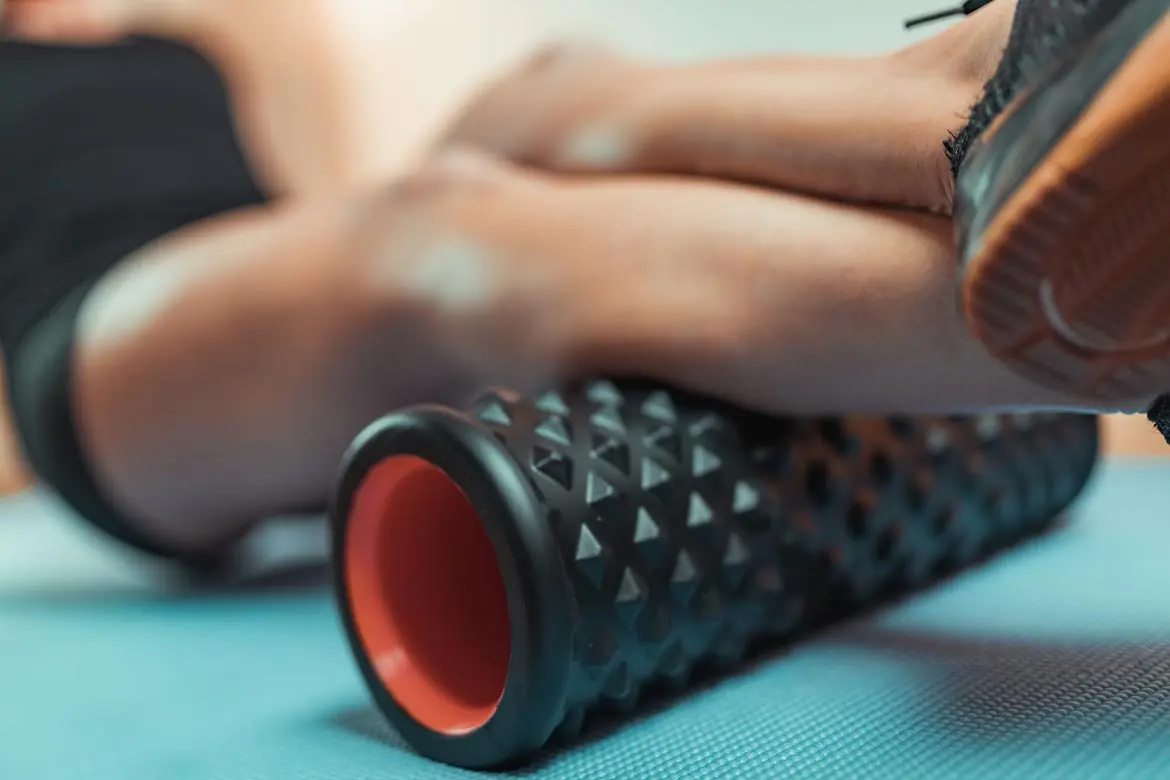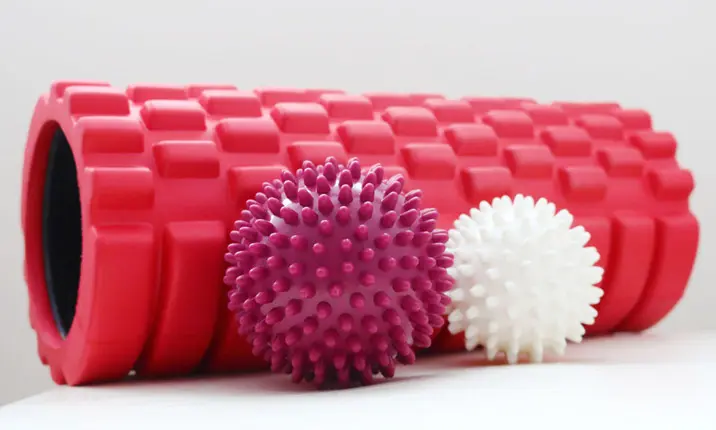-
-
Featured Care Areas


Source: Shutterstock
What's The Buzz Around Myofascial Release?
Last updated: Thursday, June 18, 2020 | 4 min reading time
A component of Pilates, myofascial release can help relieve joint and muscle tension. But is it the answer to your pain?
Understanding Fascia
Fascia is the connective tissue that wraps around your muscles. Fascia is thin but tough, supporting your muscles and organs in a multi-dimensional web. It is found throughout the body. It helps reduce friction to allow for smooth movement and overall function. However, as it is connected to all of our muscles, any tightness in the tissue can limit the flexibility and cause pain. Evidence from research suggests that treating this tissue specifically can help ease muscle pain and while improving mobility. As fascia is also connected to our nervous system, stress can adversely affect our muscles.
What is myofascial release?
Myofascial release is one of the techniques used by physiotherapists to treat tight fascia tissues. Unlike a deep tissue massage, which works on knots and pain deep within your muscles, myofascial release targets the fascia. During myofascial release, a therapist will work on trigger points. These are defined as areas of connected tissue that are stiff instead of being elastic and flexible under normal circumstances.
Typically, therapists will work on these trigger points or tight fascia tissues using a mix of manual pressure and stretching to release the tension. Some oils or creams may be used to reduce damage caused by friction on the skin. Myofascial release works better with direct skin-to-skin contact.
The trigger points in the fascia may not be the area that feels sore or painful. This is because the web of tissue often forms long lines between different areas of the body, so a trigger point in your leg could cause pain in your ribcage. This differs from a traditional massage approach, which usually focuses on the area that is in pain.
Myofascial release is often done as part of a Pilates regime. Pilates focuses on the mechanics of your body as a whole, which compliments the idea of trigger point release.
The benefits of myofascial release
Myofascial release can be used to treat a range of conditions, including:
- Myofascial pain syndrome, which is pain and inflammation in the fascia and muscles
- Tension headaches and migraines
- Venous insufficiency, where blood collects in the veins in your legs
- Fibromyalgia, which is a condition causing pain across your whole body
- Nerve pain
- General mobility issues
These conditions may cause symptoms such as constant pain, occasional waves of pain, restricted movement, chronic headaches, or fatigue.
This is where myofascial release can help free up areas of tension, reduce pain, increase mobility and improve general wellbeing in people with these conditions.
Treatment via myofascial release
Although myofascial release can be done by a trained physiotherapist, the techniques can be learnt and applied on our own at home. Treatment typically involves:
- Manual pressure from a therapist’s or your own hands
- Stretching areas of tension while applying gentle pressure
- Accompanying hot or cold therapy
- Anti-inflammatory medication
- Follow-up stretching or Pilates techniques
You can also purchase equipment designed to help you stretch out tension areas and trigger points yourself. Examples include:
- High density foam rollers
- Trigger point wands
- Mobility spheres or balls
- Massage balls with textured surfaces
- Massage roller sticks
If you want to learn to treat yourself, do so from a trained therapist as he or she can show you the correct techniques to release your trigger points. With guidance, you will be able to learn where to locate your trigger points and how to work the target area.
If you’re interested in myofascial release, you might want to first check in with a qualified physiotherapist. He or she will be able to advise you on a suitable treatment plan.
Other options
It’s important to remember that myofascial release is an alternative treatment. There is still more research to be done on its ability to treat painful muscular conditions, and there are associated risks to consider. Massage, in rare cases, can cause nerve damage or internal bleeding. If you have any high-risk medical conditions, myofascial release might not be for you.
The best thing to do is speak to your doctor. Patients considering myofascial release are likely to be good candidates for more traditional lines of treatment. Orthopaedic surgeons and sports doctors are highly trained specialists in the musculoskeletal system.
Physiotherapists who specialise in area of musculoskeletal and sports are trained to administer such techniques as well. They can help plan treatment for conditions affecting your muscles, bones, tendons, ligaments, and connecting tissues to help restore movement and function where you need it.
The chances are, if myofascial release could help you, an orthopaedic surgeon can too. The specialist will be able to first assess your condition and refer you to a physiotherapist for your rehabilitation.
A physiotherapist can give you expert advice on how, when and when not, to use this technique to manage your symptoms. Find out more about the rehabilitation services available at Gleneagles Hospital, Singapore.
Bauer, B. (2019, Apr 20) Myofascial release therapy: Can it relieve back pain? Retrieved 11/7/19 from https://www.mayoclinic.org/diseases-conditions/back-pain/expert-answers/myofascial-release/faq-20058136
DerSarkissian, C. (2017, Apr 30) Myofascial Pain Syndrome. Retrieved 11/7/19 from https://www.webmd.com/pain-management/guide/myofascial-pain-syndrome
Ganfield, L. (2009, Aug 6) Myofascial Release Therapy. Retrieved 11/7/19 from https://www.spine-health.com/treatment/physical-therapy/myofascial-release-therapy
Howell, M. (2017, Dec 20) What is fascia, and is 'myofascial release' the secret to better health? Retrieved 11/7/19 from https://www.telegraph.co.uk/health-fitness/body/fascia-myofascial-release-secret-better-health/
Krucik, G. (2015, Jan 26) What is myofascial release and does it work? Retrieved 11/7/19 from https://www.healthline.com/health/chronic-pain/myofascial-release
What is myofascial release? (ND) Retrieved 11/7/19 from http://www.fridacenter.com/mfr
DerSarkissian, C. (2017, Apr 30) Myofascial Pain Syndrome. Retrieved 11/7/19 from https://www.webmd.com/pain-management/guide/myofascial-pain-syndrome
Ganfield, L. (2009, Aug 6) Myofascial Release Therapy. Retrieved 11/7/19 from https://www.spine-health.com/treatment/physical-therapy/myofascial-release-therapy
Howell, M. (2017, Dec 20) What is fascia, and is 'myofascial release' the secret to better health? Retrieved 11/7/19 from https://www.telegraph.co.uk/health-fitness/body/fascia-myofascial-release-secret-better-health/
Krucik, G. (2015, Jan 26) What is myofascial release and does it work? Retrieved 11/7/19 from https://www.healthline.com/health/chronic-pain/myofascial-release
What is myofascial release? (ND) Retrieved 11/7/19 from http://www.fridacenter.com/mfr










